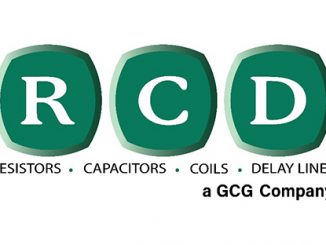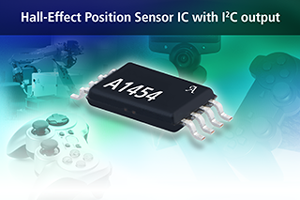By Philip Keller, Marketing & Product Management – Metrolab Technology SA
A new generation of handheld 3-axis magnetometers, introduced a few years ago, is capable of measuring magnetic field strengths in the range from milliteslas to 3 tesla. [1] Recent developments have extended this measurement range upward, to 14 T, as well as downward, into the nanoteslas, all within the same family of ultra-compact, USB-powered instruments. The keys are innovative sensor technologies and calibration.
Three-Axis Hall Magnetometer on a Chip: mT to 3 T
The key technological breakthrough underlying the introduction of Metrolab’s High-Field Three-Axis Hall Magnetometer THM1176-HF was an integrated circuit called MAG3D. On a single CMOS IC, it combines three orthogonal Hall sensors, current sources, amplifiers, range switching and spinning-current error correction. In fact, it is a complete 3-axis Hall magnetometer on a chip (see Figure 1).

The commercial version of this IC supports four measurement ranges: 0.1, 0.5, 3 and 20 T, with a resolution of 0.3 mT on the lowest scale. Roughly speaking, this one chip can measure field strengths from milliteslas to 20 tesla. However, the specified nonlinearity on the 20 T range is 2 T; clearly, such measurements are worthless without correcting for nonlinearity and other “secondary” effects such as temperature drift. The THM1176-HF does all of this; the limitation is simply the availability of calibration magnets up to 20 T.
Calibration magnets are special. To ensure that the Hall probe and the reference instrument [3] “see” the same field, the field must be very uniform and stable. The gap must be large enough to allow the 3-axis Hall assembly to be turned in all directions. Finally, the temperature of the Hall probe must be controllable , in other words, well insulated from water-cooled pole faces or superconducting coils.
Metrolab’s primary calibration magnet is a 2-ton electromagnet that, with the required gap, goes to about 1.7 T. In addition, we use a superconducting whole-body MRI magnet [4] to obtain additional calibration points at ±3 T, and a zero-gauss chamber for a point at 0 T. The usable range of a THM1176-HF with the MAG3D sensor is thereby limited to ±3 T.
3 T to 14 T: High-Field Calibration Magnets
3 T is currently the highest field strength allowed for standard medical imaging, so calibrating to higher field strengths requires a different type of magnet. Possible choices include the superconducting, small-bore magnets used for NMR spectroscopes, now standard equipment in chemistry labs. Some of these magnets can go to very high field strengths, 20 T and more, and feature a warm bore with a relatively large uniform-field region. However, the bore diameter, generally around 4 cm, is very tight for three-axis calibration, too tight, as it turned out.
A new fixture design has therefore targeted superconducting magnets with a larger bore (> 10 cm), designed for either animal or human MRI research applications. Metrolab is currently analyzing data from the first measurements in such magnets, and expect to be able to offer 3-axis, temperature-compensated calibration up to 14 T in the near future.
mT to µT: Flux Concentrators and Fluxmeter Calibration
The noise floor of the MAG3D sensor limits its sensitivity to the millitesla range; measuring lower field strengths requires another sensor technology. In 2010, Metrolab released the THM1176-LF, “Low Field,” based on an assembly of three commercially available single-axis Hall sensors.
 Calibrating the THM1176-LF presented a whole new challenge, since the reference instruments for calibrating high-field probes only measure down to around 40 mT. In addition, the probe is too large to calibrate the Z-axis in a standard calibration magnet. The solution was to use an oscillating field, where the reference instrument is now a fluxmeter (see Figure 2).
Calibrating the THM1176-LF presented a whole new challenge, since the reference instruments for calibrating high-field probes only measure down to around 40 mT. In addition, the probe is too large to calibrate the Z-axis in a standard calibration magnet. The solution was to use an oscillating field, where the reference instrument is now a fluxmeter (see Figure 2).
Thus a combination of innovative sensor and calibration technologies has allowed the lower limit of measurements to be pushed down to the microtesla range. The two instruments, THM1176-HF and THM1176-LF, are completely compatible in most other respects, including bandwidth, form factor and software interface. The active volume of the LF model is orders of magnitude larger than that of the MAG3D, but that is not an issue in typical applications. The HF model is optimal for measuring the field in a strong magnet, whereas the LF model is typically used to measure fringe fields. A kit combining the two models has proven to be a very popular solution to “go anywhere, measure anything.”
µT to nT: Three-Axis Fluxgate Sensors
Well, almost anything. Certain applications require even more sensitivity; examples range from geophysics to MRI site surveys to vehicle detection. The THM1176-LF, however, is already operating at the lower limit of what a Hall sensor can provide; going lower requires another sensor technology.
The obvious choice is fluxgate technology, and earlier this year, Metrolab released the TFM1186 Three-Axis Fluxgate Magnetometer. Once again, the solution consists of a technically sophisticated, but commercially available sensor, integrated with the electronics, firmware and software of the THM1176 magnetometer system. The result is a completely compatible extension of the THM1176 family of magnetometers.
The fluxgate sensor is a recently released model by a well-known fluxgate expert. [6] Its three-axis capability, compact form factor, low power consumption and 1 kHz bandwidth make it completely compatible with the rest of the THM1176 family. Compared with Hall devices, the noise figures of fluxgate sensors are astounding: the TFM1186 achieves a resolution of 4 nT, which corresponds to the least-significant bit of the ADC. The range is ±100 µT, approximately twice the earth’s field.
Unlike the other members of the family, Metrolab calibrates only the TFM1186 electronics, rather than the entire system; the magnetic calibration of the fluxgate sensor is provided by the manufacturer. In addition, the fluxgate sensor does not include a temperature sensor, and the measurements are not fully temperature-compensated.
 Perspectives for the Future
Perspectives for the Future
With the recent addition of the TFM1186 to the existing THM1176 family, only three probes are needed to accurately measure magnetic field strengths from nanoteslas to more than 10 tesla (see Figure 3).
What does the future hold? The evolution continues unabated, with new sensors, new calibration techniques and new system electronics. New sensors include a further evolution of the MAG3D sensor with better resolution, as well as a fully temperature-compensated fluxgate sensor. New calibration techniques include automation, optimized analysis algorithms and unified procedures. New system electronics will be even more compact and at the same time feature higher performance. However, a handheld Three-axis SQUID Magnetometer TSM1196, with picotesla resolution, is not yet on the drawing boards…
References
[1] See Magnetics Business & Technology, April/May 2008, p. 6.
[2] P. Kejik, E. Schurig, F. Bergsma, and R. S. Popovic, “First fully CMOS integrated 3D Hall probe,” in Proc. Transducers, Seoul, Korea, Jun. 5–9, 2005, pp. 317–320.
[3] The reference instrument is almost always an NMR probe, which features extremely high accuracy and essentially zero temperature drift. http://pt2025.metrolab.com.
[4] MRI = “Magnetic Resonance Imaging,” normally used for medical imaging.
[5] See R.S. Popovic, Hall Effect Devices, second ed., IOP Publishing Ltd, 2004, pp 297-305.
[6] Bartington Instruments Ltd, 5, 10 & 11 Thorney Leys Business Park, Witney, Oxon, OX28 4GE, England; http://www.bartington.com.
Philip Keller is responsible for Marketing & Product Management at Metrolab Technology SA, in Geneva, Switzerland, since 2003. His career spans executive management as well as research positions, in a variety of technology industries, ranging from flight simulation to medical ultrasound. He holds Masters degrees in Physics from the Ohio State University and International Management from the University of Lausanne in Switzerland.



